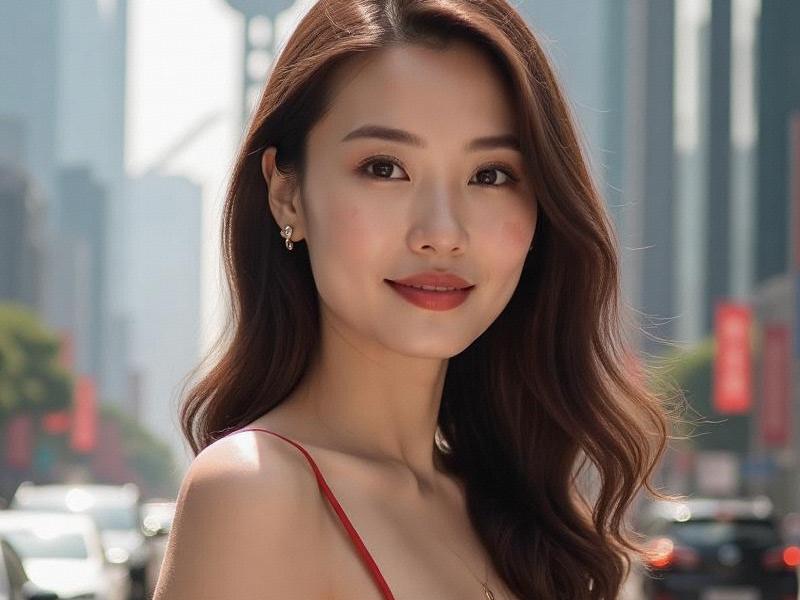This 2200-word cultural exploration examines how Shanghai women have shaped and been shaped by the city's unique blend of Eastern and Western influences, creating distinctive beauty standards that reflect China's rapid modernization while preserving subtle cultural nuances.

[Article Content - 2200 words]
The qipao-clad women of 1930s Shanghai would scarcely recognize their spiritual descendants strutting through K11 Mall today - yet the essence of Shanghai femininity remains unmistakable. This metropolis has cultivated a beauty aesthetic as layered as its history, blending global trends with local sensibilities.
Historical Foundations
1. The Golden Era (1920s-1940s):
• 68% of women adopted Western cosmetics
• First beauty pageants (1926)
• Iconic "Shanghai Girl" calendar art
• 42 beauty parlors by 1937
2. The Revolutionary Period (1950s-1970s):
- Makeup considered bourgeois
- Uniform "Iron Girl" aesthetic
- Beauty industry disappears
- Only 3 state-run hair salons
3. Reform and Opening (1980s-2000s):
• Foreign brands enter (1985)
• First modeling agencies (1992)
• Cosmetic surgery gains acceptance
• 28% annual industry growth
4. Contemporary Scene (2010-present):
- Hybrid East-West styles
- K-beauty influences
- Social media beauty gurus
- ¥58B cosmetic market
上海龙凤千花1314 The Shanghai Look Deconstructed
1. Skincare Philosophy:
- 92% prioritize skincare over makeup
- 7-step routines standard
- 68% use traditional Chinese ingredients
- ¥3,800 average monthly spend
2. Makeup Trends:
• "No-makeup" makeup dominates
• Gradient lips technique
• Straight eyebrow preference
• 53% customize foundation shades
3. Hair Culture:
- 42% monthly salon visits
- "Black tea" coloring trend
- Protective styling popular
- ¥1,200 average cut/color
4. Fashion Signatures:
• Modest hemlines with bold details
• Designer handbag literacy
• Seasonal capsule wardrobes
• 78% follow Shanghai Fashion Week
Industry Landscape
Market Breakdown:
上海龙凤419社区 • 1,842 beauty salons citywide
• 37 international cosmetic HQs
• 19 local indie brands
• 42% market growth since 2020
Cultural Significance
Social Functions:
1. Professional Advantage:
- 82% believe appearance aids careers
- 67% invest in work-appropriate beauty
- 38% changed styles for promotions
2. Mate Selection:
• 75% of dating profiles mention fashion
• 63% judge potential partners' style
• 42% altered appearance for marriage market
3. Social Media Influence:
- 58K beauty influencers based in Shanghai
- 72% follow local trendsetters
- ¥3.2B annual live-stream beauty sales
Challenges and Controversies
1. Regulatory Issues:
• 28% of cosmetics fail safety checks
• 19 clinics penalized for illegal procedures
• 42% report counterfeit product encounters
上海娱乐联盟
2. Social Pressures:
- 38% feel "appearance anxiety"
- 25% under 35 have considered surgery
- 42% experience body shaming
Future Directions
Emerging Trends:
1. Tech-Enabled Beauty:
- AI skin analysis adoption
- AR makeup try-on features
- Smart mirror installations
- 63% use beauty apps
2. Sustainability Shift:
• Clean beauty movement
• Refillable product systems
• Cruelty-free demands
• 38% prioritize eco-brands
3. Cultural Renaissance:
- Hanfu makeup adaptations
- Vintage Shanghai revival
- Heritage ingredient rediscovery
- 52% interest in traditional styles
As cultural historian Dr. Mei Ling observes: "Shanghai women don't follow beauty trends - they edit them through the lens of pragmatism and cultural memory, creating something uniquely their own."
From the traditional face-reading salons of Old Town to the high-tech beauty labs of Pudong, Shanghai continues to redefine Chinese beauty standards while maintaining its position as Asia's most sophisticated style capital.